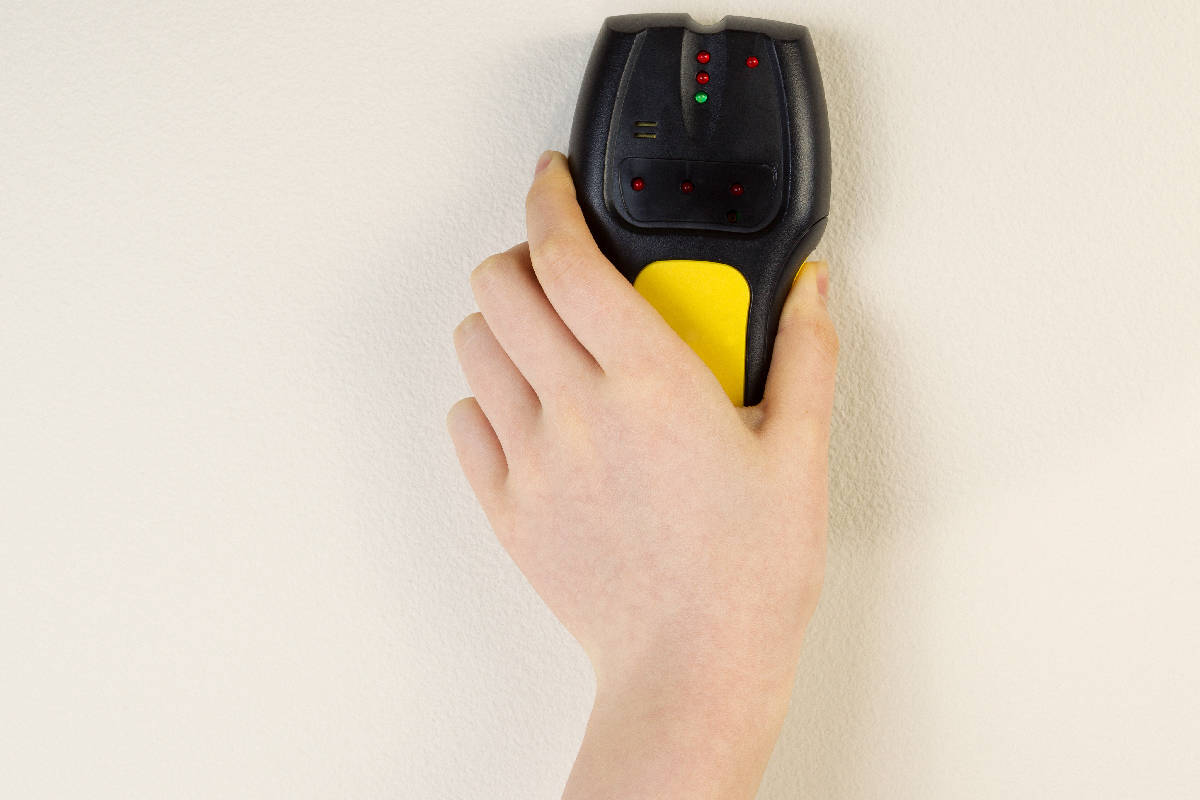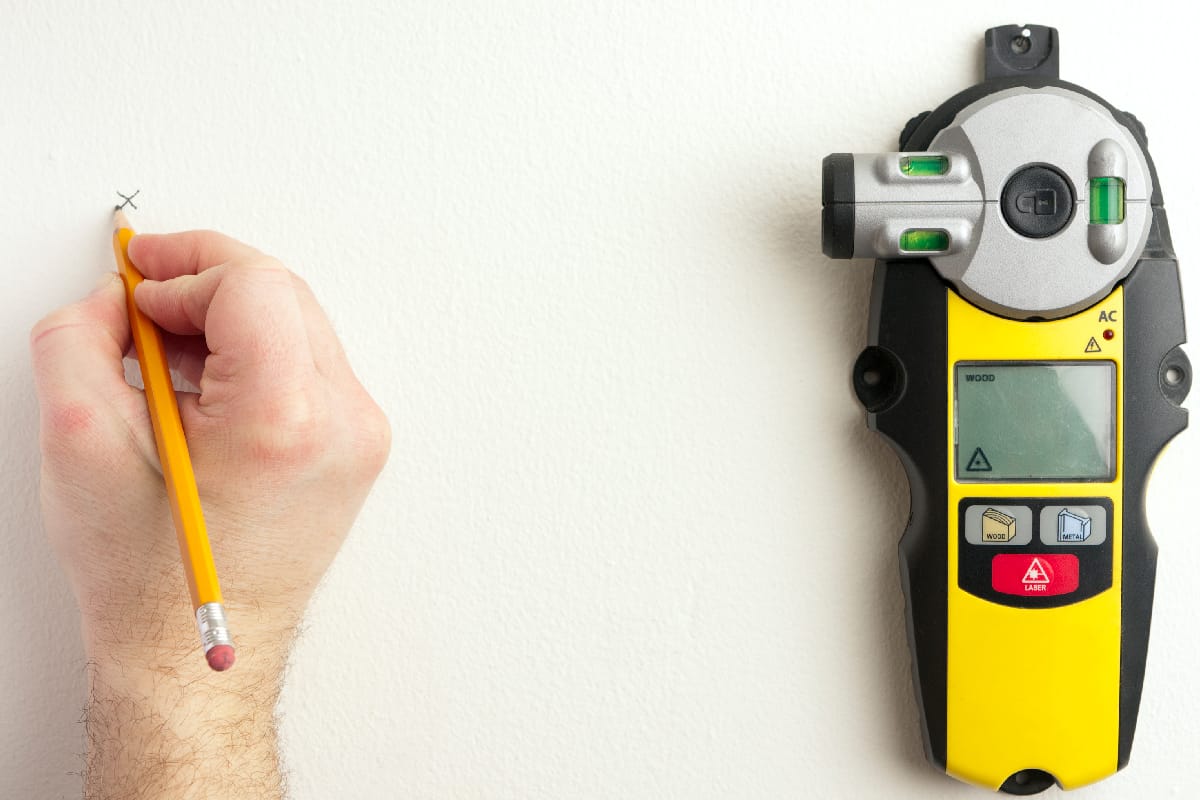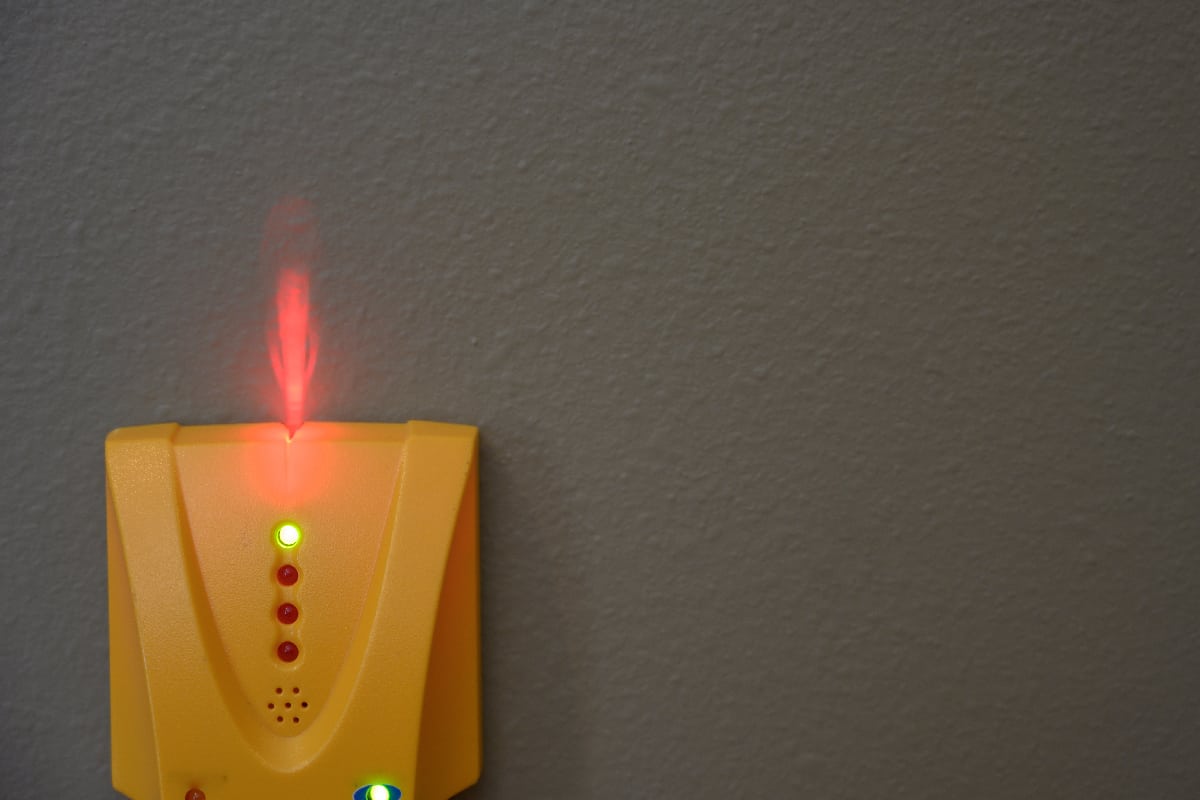You have just found the perfect spot to hang a painting or install a wall-mounted fixture or an electrical outlet. The first step is to locate the studs. We researched to provide you with a guide, including more relevant information you may need.
You can use an electronic straight-line stud finder to look for the studs behind the drywall. Below is a step-by-step guide:
- Place the stud finder upright on the wall.
- Press the calibration button.
- Move your gadget along the wall until a light illuminates indicating you have found the first edge of a stud. Mark this point with a pencil.
- Continue moving it in the same direction until a light illuminates again. This means you have found the second edge of the same stud. Mark this point as well using your pencil.
Keep reading as we guide you step-by-step on how to find a stud behind the drywall. We have provided tips on how to use the stud finder correctly. Included, are common problems that occur in a stud finder and how to troubleshoot. In addition, a comparison is made with a magnetic stud finder. Lastly, you'll understand why it may be necessary to use a stud finder in contrast to other traditional methods.
![Man using stud finder to locate the stud on the wall, How To Use A Straight Line Stud Finder [Step By Step Guide]](https://uooz.com/wp-content/uploads/2022/11/How-To-Use-A-Straight-Line-Stud-Finder-Step-By-Step-Guide-e1669067553538.jpg)
Guide To Using A Straight-Line Stud Finder
Before we learn how to use a straight-line stud finder, it’s good to know the available types. They include the following:
- Magnetic Stud Finders
As the name suggests, magnetic stud finders have magnets in them. They help find a stud by getting stuck on the part of the drywall that has a screw in it. It is assumed or expected that screws connect the drywall to the studs.
- Stud Finder App On Phone
There are stud finding apps that you can download on a smartphone. They work by detecting screws using your phone’s magnetometer, a sensor that measures the magnetic field.
- Electronic Straight Line Stud Finder
Electronic stud finders require batteries to operate. They pick up the denser parts of the drywall. In this post, we shall discuss how this type of electronic finder works.
How Do You Find Studs Using An Electronic Line Stud Finder?

You can find this electronic stud finder on Amazon.
You can use an electronic line stud finder by following the detailed guide below:
- Check the if the batteries are working.
- First, place it upright, positioning it on the hollow part of the drywall.
- Depress the button.
- Start moving it in one direction while holding it upright against the wall. In this case, we shall be moving to the right.
- When it reaches the first edge of a stud, a light from the stud finder will illuminate it. Mark this point with a pencil.
- Continue moving it to the right while estimating where the edge of the second stud could be. The light will not illuminate as you do this.
- Next, move it back towards the left, and the stud finder will illuminate a light when it reaches the edge of the second stud. Mark this point as well using a pencil.
- Now you know where the two edges of a stud are.
Have a look at the video below explaining the steps above in detail:
Making The Most Of Your Stud Finder

As with any other tool, you will not achieve your desired results if you don't use it correctly. Therefore we have provided tips on how to use a stud finder for maximum benefit:
- Don't turn the stud finder from one side to the other while looking for studs. Instead, keep it upright and flat against the drywall.
- Neither of your hands should be on the wall. Instead, ensure you are holding the stud finder firmly against the wall.
- Stud finders work best on drywalls and not on plastered walls.
- If you didn't know, you can also use your stud finder to locate joists on the ceiling.
- Don’t forget to mark the areas you have found to have studs, or you might forget where the studs are.
- As a guide, studs on walls are normally 16 inches apart, and 24 inches apart in ceilings.
- Don’t forget to have with you an extra pair of batteries. Your gadget can suddenly stop working simply because the batteries are dying.
How To Troubleshoot Your Electronic Stud Finder
As simple as the stud finder looks, it can malfunction because of several reasons. Below are some solutions to problems you may experience with your stud finder and how to troubleshoot:
Examine The Battery
This should be the first step to finding out why your stud finder is not working. It could be your battery has expired, or you are using batteries that do not last long.
Calibrate Your Stud Finder

Your stud finder can malfunction if you press the calibration button before placing it on the wall. If you do this, the stud finder will set itself to locate the density of thin air, instead of the dense parts of the wall.
To correct this issue, place your gadget on the wall, and press the button. It will calibrate so that it can pick out the studs.
Edge Finder Vs Center Finder
If you did not determine your stud finder before using it, you could get some errors. Find out if yours locates the edges or centers of the studs. You may end up marking the edge of a stud when in fact it is the center of the stud.
Pros And Cons Of An Electronic Stud Finder?
Let’s look at the Pros and Cons of the electronic stud finder vis-à-vis the magnetic stud finder.
Electronic Stud Finder
Pros
- Offers more precision at identifying studs than magnetic stud finders. The light illuminates precisely on the edges of a stud or the center of a stud.
- The highest quality electronic stud finders can find studs through walls up to 1.5 inches deep. A magnetic stud finder cannot reach such depths.
Cons
- There is the risk of the gadget not working because the batteries are dying. On the other hand, you can use a magnetic stud finder without batteries, meaning you do not have to worry that your gadget may fail mid-way.
- Electronic stud finders are typically more expensive than magnetic ones.
Magnetic Stud Finder
Check out this magnetic stud finder on Amazon.
Pros
- Small enough to carry around, including in your shirt pocket.
- Don’t require batteries to function.
- They are less expensive than electronic stud finders.
Cons
- Since they detect metal, they not only pick out the screws in the studs but can also sense where nails on a horizontal board are. This can be a costly error if you drill any other part of the drywall, and not on a stud. This can be hazardous, especially when hanging something heavy like a painting or installing a shelf. The strain of the weight on the drywall can damage it.
Is It Necessary To Use A Stud Finder?

If you don’t have a stud finder, you can still use other traditional methods which may not be worth it. For example, you can tap the drywall, and listen out for sounds. The area that produces a solid sound has studs behind the wall. Or you can use a flashlight to check for dimples, which indicate the studs are there.
These methods are not exactly reliable, though there are experts who can use them and find the studs.
However, it's good to avoid making any mistakes, or you might mess up big time. For example, if you hang a heavy painting on your drywall instead of on a stud, the screws can fall out slowly due to the weight. Eventually, the painting may fall, damaging it.
In Closing
An electronic straight-line stud finder is an essential gadget that is necessary to have in your home. Correctly using a stud finder is the only way to make the most out of it, and if it stops working, you can troubleshoot using the methods discussed herein.
Below are more of our previous posts about studs and stud finders:


